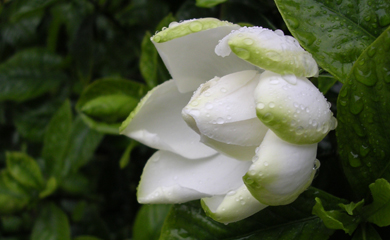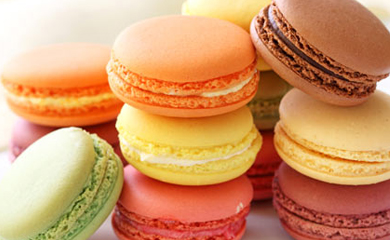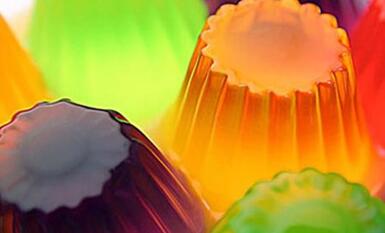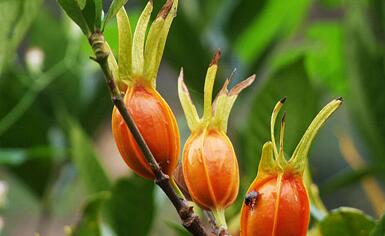What is gardenia?
Gardenia (scientific name: Gardenia Jasminoides Ellis), alias: Yellow Gardenia, Mountain Gardenia, Gardenia Jasminoides, is the fruit of Rubiaceae plant-gardenia, which is a kind of traditional Chinese medicine, and is listed into the first batch of edible herbal medicine by the Ministry of Health. It has the effects of liver protection, cholagogue, blood pressure lowering, sedation, hemostasis, detumescence, and so on. In TCM clinical, it is commonly used to cure jaundice hepatitis, sprain and contusion, hypertension, diabetes, and other diseases.
Chinese name: Gardenia
Alias: Gardenia, Mudan, Xianzhi, etc.
Phylum: Angiospermae
Order: Gentianales
Distribution area: In the south of Yangtze River, and especially in Zhangshu, Fuzhou and Fengcheng of Jiangxi Province
Genus: Gardenia Ellis
Sub-family: Cinchonoideae Cape Jasmine Fruit
Latin name: Cape Jasmine Fruit
Kingdom: Plant kingdom
Class: Dicotyledoneae
Family: Rubiaceae
Species: Gardenia
Binomial nomenclature: Mudan, Mountain Gardenia
Tribe: Gardenieae
Phonetic name: Zhī Zi
English name: Fructus Gardeniae
Alias: Yellow Gardenia, Yellow Fruit Tree, Mountain Gardenia, Red Branch
Origin: It is dry ripe fruit of Gardenia jasminoides-a kind of Rubiaceae plant, whose root can be used as medicine. It's harvested during September-November when the fruit is ripe and in reddish-yellow. Remove the stem and impurities, steam it slightly or place it in boiling water shortly, take out and dry it. Roots are dug in summer and autumn, washed clearly and then dried.
Properties: It is long ovoid or oblong, 1.5 ~ 3.5cm long, 1 ~ 1.5cm in diameter. It's reddish yellow or brownish-red on surface, with 6 wings-like vertical edges, and 1 distinct longitudinal vein and branches between edges. Remaining sepal is left at the top, slightly pointed at the base, and residual stems can be seen. Pericarp is thin, crunchy and slightly glossy; the inner surface is pale, shiny, with 2 ~ 3 uplift Pseudoseptum. Most seeds are flat oval, assembled, in deep red or reddish yellow, with fine wart like structures on surface, and faint odor, acidic and bitter taste.
- RecommendRead
-

19th Food Ingredient
2016-12-25 -

14th Food Ingredient
2016-12-25 -

The company attende
2016-12-25 -

The company attended
2016-12-25 -

Warm congratulations
2016-12-25